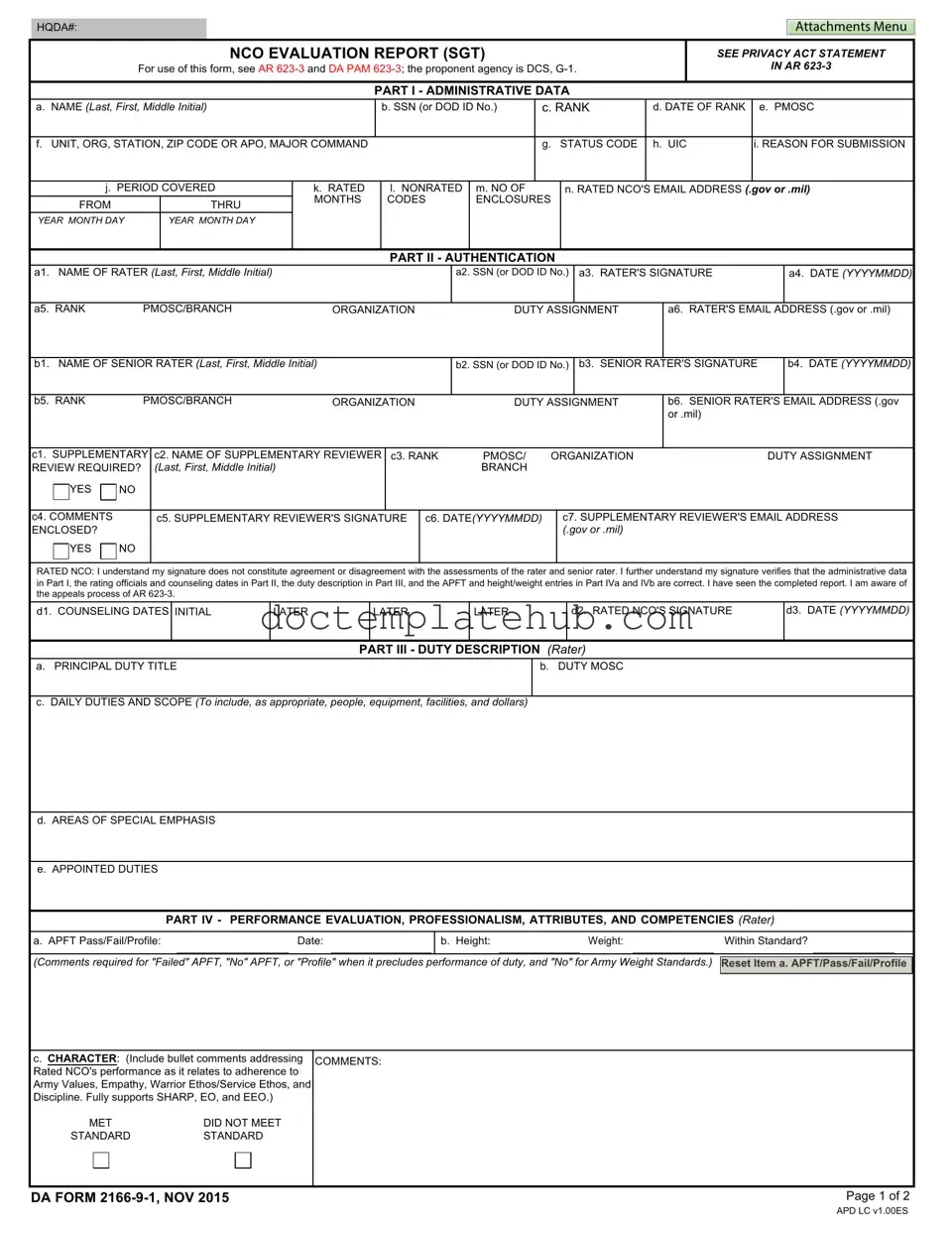What is the DA 2166 9 1 form used for?
The DA 2166 9 1 form is primarily used for evaluating Non-Commissioned Officers (NCOs) in the U.S. Army. This evaluation report provides a comprehensive assessment of an NCO's performance, professionalism, attributes, and competencies over a specified period. It serves as a critical tool for career development, promotion considerations, and overall personnel management within the Army.
Who is required to complete the DA 2166 9 1 form?
The form must be completed by the NCO's rater, who is typically the immediate supervisor. Additionally, a senior rater, who is usually one level above the rater, must also provide input. The rated NCO is required to acknowledge the report by signing it, although their signature does not indicate agreement or disagreement with the evaluations.
What information is needed to fill out the DA 2166 9 1 form?
To complete the form, several pieces of information are required. This includes the rated NCO's name, social security number or DOD ID, rank, date of rank, unit information, and the period covered by the evaluation. The rater and senior rater must also provide their names, ranks, signatures, and email addresses. Additionally, the form includes sections for performance evaluations across various competencies and attributes.
How often should the DA 2166 9 1 form be submitted?
The DA 2166 9 1 form should be submitted annually or at the end of a specific rating period. It may also be required during a change of duty assignment or when an NCO is being considered for promotion. Regular evaluations ensure that performance feedback is timely and relevant, aiding in the professional development of NCOs.
What are the key areas evaluated on the DA 2166 9 1 form?
The evaluation focuses on several key areas, including character, presence, intellect, leadership, development, and achievement. Each area is assessed based on specific criteria, and the rater provides comments to support their evaluations. This structured approach allows for a thorough assessment of the NCO's capabilities and contributions to the Army.
What happens if an NCO disagrees with their evaluation?
If an NCO disagrees with their evaluation, they have the right to appeal the report. The appeals process is outlined in Army Regulation 623-3. The rated NCO should communicate their concerns to the rater and senior rater, and if necessary, follow the formal appeal procedures to seek a review of the evaluation.
Is there a privacy concern with the information on the DA 2166 9 1 form?
Yes, the DA 2166 9 1 form contains sensitive personal information, such as social security numbers and other identifying details. As such, it is important to handle this form with care, ensuring that it is stored securely and shared only with authorized personnel. The Privacy Act statement included in the form provides guidance on how to protect this information.
Where can I find additional resources or guidance on completing the DA 2166 9 1 form?
Additional resources and guidance can be found in Army Regulation 623-3 and DA Pamphlet 623-3. These documents provide detailed instructions on the evaluation process, including how to fill out the DA 2166 9 1 form correctly. It is advisable to consult these resources for comprehensive understanding and compliance with Army policies.
